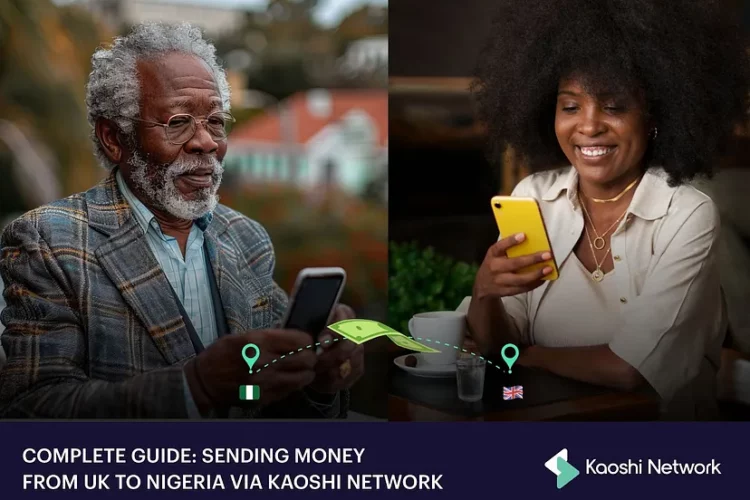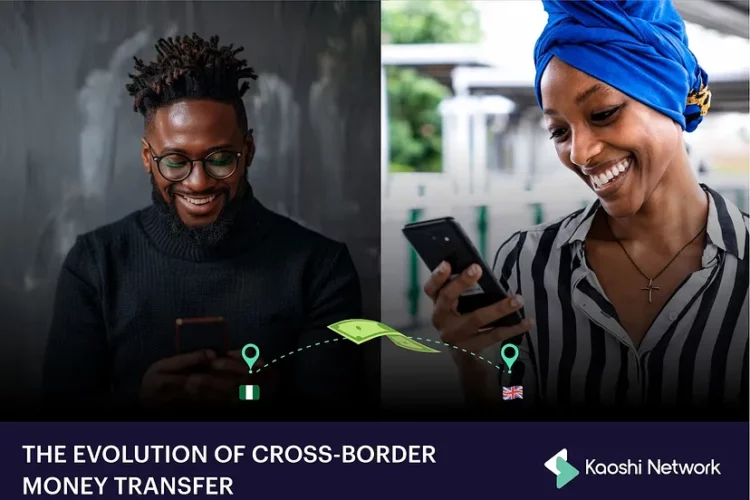
In today’s world, the rise of cross-border money transfers is highly facilitated by peer-to-peer (P2P) transactions. At Kaoshi, we provide you with P2P transaction services. However, we have taken it a step further. We offer both the regular P2P and what we refer to as the hybrid P2P services, each catering to the unique needs and preferences of our diverse customer base. In this article, we’ll delve deeper into what they mean, their distinctions, and how each of them best suit you and your needs on our platform.
Regular Peer-to-Peer (P2P) Transactions: Just as the name implies, this type of transaction is done from person to person without the help of a remittance service. Here is how a regular p2p transaction happens on Kaoshi:
- Chika, who is resident in Nigeria, has naira and wants to send USD to her brother Emeka in the United States.
- Chika goes on Kaoshi and posts that offer, including her rate and amount. She becomes the poster.
- On the other hand, Tolu in the US who has USD wants to send Naira to his mother, Osas who is in Nigeria. Tolu creates a Kaoshi account and browses all the offers, comes across Chika’s offer, likes the terms, and decides to match the offer.
- Tolu becomes the matcher. Tolu then sees Emeka’s bank details and as a fellow US resident he sends Emeka the USD he expects.
- After confirmation, Kaoshi automatically processes Chika’s naira to Osas, who is Tolu’s beneficiary.
In this instance, Tolu could send Emeka the USD he needed through Zelle (which is a service that lets you send money to friends and family without any extra costs.
Hybrid Peer-to-Peer (P2P) Transactions: Again, just like its name, Hybrid transactions combine key features of the regular P2P systems with established remittance services like World Remit, Remitly and Sendwave. The regular P2P transactions rely solely on direct exchanges between users, but hybrid P2P transactions leverage the extensive networks of remittance providers to facilitate money transfers across various countries and regions.
- Ahmed, who is in Nigeria wants to swap his naira for USD into his Domiciliary account.
- He goes on Kaoshi and posts an offer with his rate and amount. Ahmed becomes the poster.
- Tolu on the other hand who is in the US wants to send naira to his mother, Osas who is in Nigeria. Tolu opens a Kaoshi account, logs on and browses offers, he comes across Ahmed’s offer, likes the terms and matches the offer. Tolu becomes the matcher.
- Through the help of a remittance service like World Remit, Tolu can then send USD to Ahmed’s Domiciliary account and Kaoshi then processes Ahmed’s naira to Osas to complete the money swap.
So, just like the picture painted in the regular P2P example, the hybrid P2P transaction or service works in the same vein on Kaoshi but instead of regular bank transfers, we employ the use of third-party remittance services for transactions and that is what gives Hybrid P2P transaction its uniqueness. This feature also implies that hybrid P2P transactions can be done with someone who is not in your recipient’s country. That means EUR, GBP etc can be sent and the remittance party involved, receives it and converts it to USD for the poster’s Domiciliary account unlike the P2P service where recipient and sender must be in the same country to facilitate local transfers.
That is not all. On Kaoshi, for the P2P transaction, we have what we refer to as “Partial Match” enabled. This means that for the P2P, a matcher can decide to match part of the money posted by the poster. This is helpful in the sense that if for example, a Matcher sees an offer of $200 he or she likes with a favorable rate, but they only want to do $60, they will be able to match $60 out of the $200. This gives a matcher more flexibility with offers.
On the other hand, Hybrid transactions are not Partial Match enabled, however, users can match offers in multiples of 50s. So, for instance, if a matcher sees a post of $200, the matcher can only match $50, $100, $150, and $200. So, while the Hybrid offer is not as flexible as its P2P counterpart, it still lets you match offers that are not the full offers seen on the platform.
So, for a quick recap, at Kaoshi, the key distinctions between Regular P2P and Hybrid P2P offers lie solely in their method of payment and matching styles on Kaoshi. While we have the bank-to-bank transfer and more flexible matching figures for the regular, we have the employment of remittance services which facilitate international transfer and matching figures in increments of 50 for the hybrid.
In conclusion, understanding the definitions and distinctions between the regular and hybrid P2P transactions is essential for users navigating cross-border money transfers on Kaoshi. Whether seeking flexibility and autonomy or standardized processes and global reach, Kaoshi provides comprehensive solutions to facilitate seamless and efficient money transfers across borders. Both services are tailored to suit the diverse customer base we work with and today, you could pick the one that best caters to your needs to become a part of the Kaoshi family.
Sign up Here to be part of this wonderful experience.




